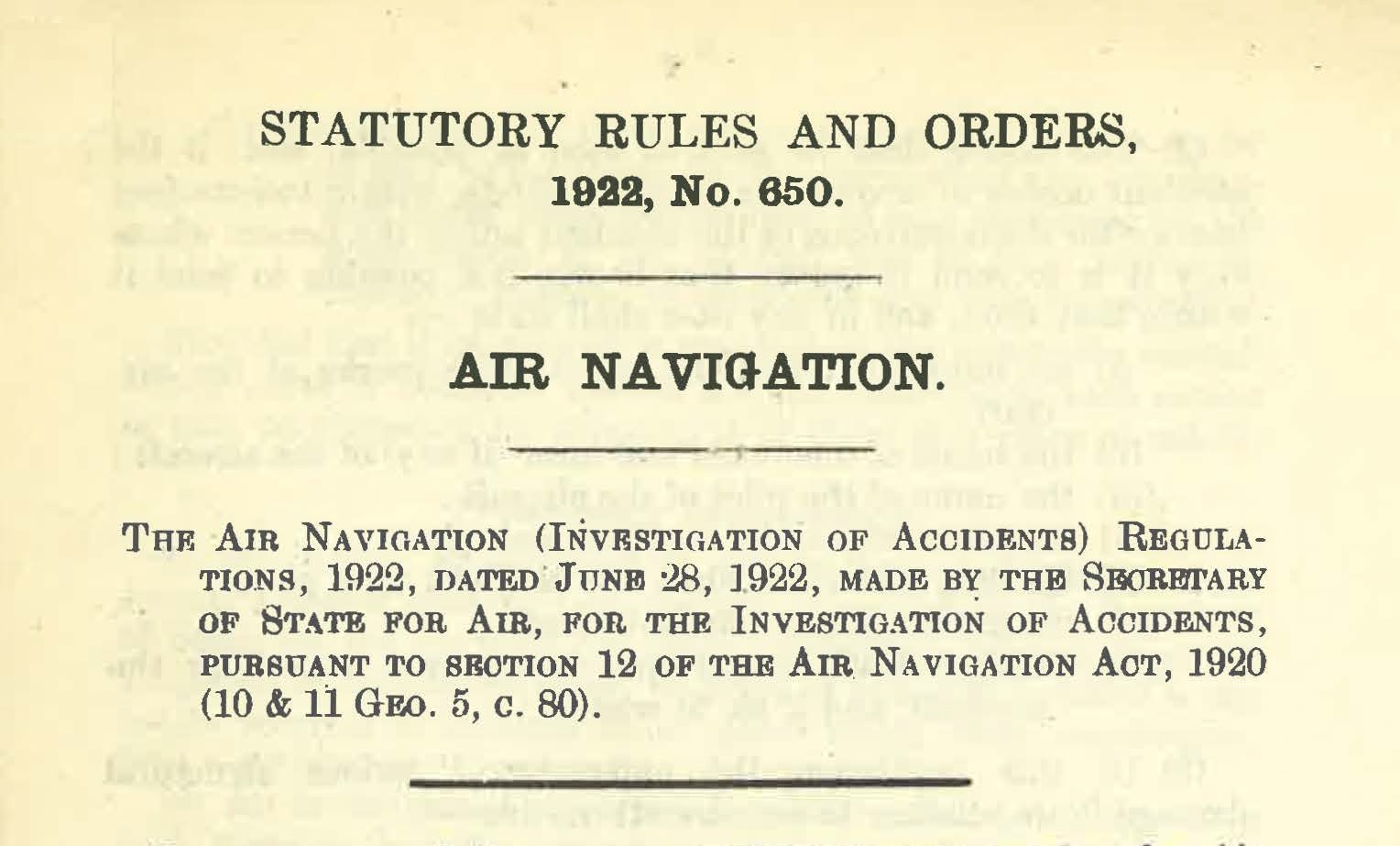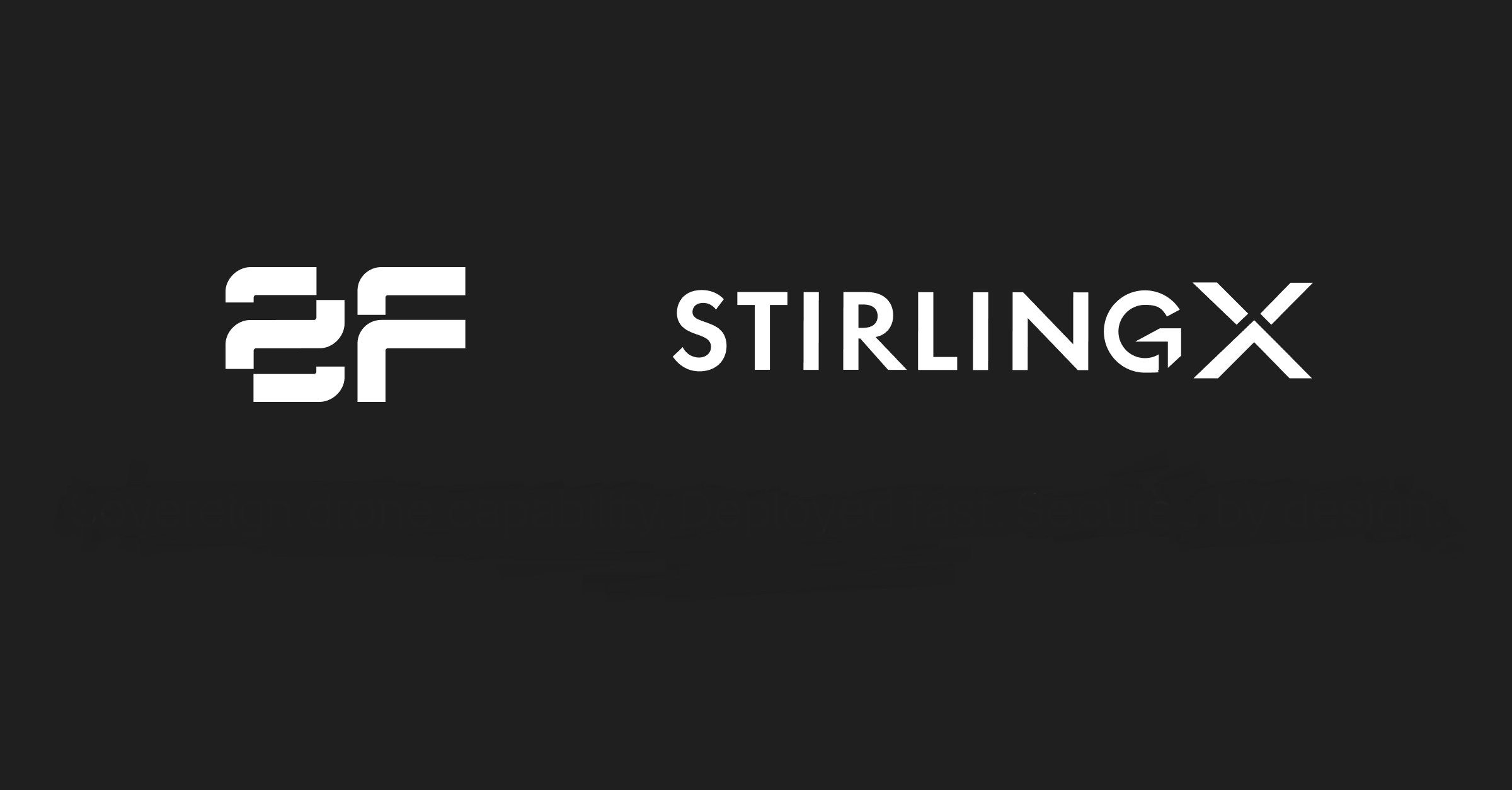100 years of air accident investigation regulation in the UK

Image courtesy Air Accidents Investigation Branch (AAIB)
Since then the regulations have been amended and revised numerous times in 1925, 1930, 1935, 1951, 1969, 1983, 1989, 1996 and 2018.
On 28th June 1922 the first regulations were issued in the UK to formalise the investigation of aircraft accidents. These were “The Air Navigation (Investigation of Accidents) Regulations 1922”. They were formed pursuant under Section 12 of the Air Navigation Act 1920.
One hundred years on many of the original principles remain today in how aircraft accidents and serious incidents are investigated. These regulations also set in place a framework for the investigation of accidents worldwide, as shown in the international conventions following WWII.
Enduring influence
Back in 1922, the definition of an accident was one that involved death or personal injury whether in an aircraft or not, or the aircraft suffers structural damage. Over the years the definition has been refined but remains fundamentally the same at a global level. Another enduring element is the notification and what it should contain, with these basic elements remaining today in the internationally recognised ACCID.
Ultimately these regulations were designed to formalise the activity that was already being undertaken by the embryonic Accidents Investigation Branch – the fore runner the current Air Accidents Investigations Branch. A quote from the Shelmardine Committee report of 1945 summarised that the object of accident investigation is to ascertain causes of accidents in order that further accident from the same causes may be avoided and went on to endorse that the regulations has largely achieved that objective.
The first accident investigation report was published by Mr Cockburn in 1915, the first to be formally issued by the Accidents Investigation Branch of the Air Ministry was in December 1919 also by Mr Cockburn. The regulations in 1922 introduced the term Inspector of Accidents, with Major Cooper being the first on a report published on 26 Sept 1922 involving a Vickers “Vulcan” registration G-EBBL. The term is still in use today albeit now as Inspectors of Air Accidents – to avoid confusion with other transport modes.
Along with defining an Inspector or Accidents, the 1922 regulations also gave them important powers to summons any person, to require persons to sign a declaration of truth, to require production of any document and to have access to and examine any aircraft. It also laid down the need to preserve evidence and for the aircraft not to be disturbed until authorised. A person who obstructed an Inspector in the excise of their powers would be in contravention of the regulation. All these powers have endured to this day.
Evolution
In 1922 there were two levels of investigation, a preliminary investigation with a report by an Inspector of Air Accidents, and a “formal” investigation being one carried out by “the Court”. A “formal” investigation was held in an open court and produced a report that stated the findings and causes of an accident and made recommendations for the preservation of life and the avoidance of similar actions in the future. Interestingly up to 1943 only 3 “formal” Court investigations had been carried out which showed that the information in the preliminary investigations was sufficient that a further investigation was not required. In 1951 investigations were therefore moved from being in an open court to being in private, albeit with the possibility of the Secretary of State at any time calling a public inquiry.
On completion of an investigation a report was produced, in 1922 it was only those that the Secretary of State felt necessary were made publicly available. By 1969 though all reports were made public.
The 1922 regulations did however allow for a certain amount of blame and indeed indicated that the accident could be solely caused by failure of the pilot, something that is now anathema to any air accident investigator. The regulations also allowed for recommendations to be made for the cancellation, suspension or endorsement of any licence or certificate. It was not until 1969 that the Regulations defined that the full purpose of an accident investigation was to prevent future accidents and not to ascribe blame.
Beyond Aviation
More recently it is interesting to note the lasting legacy of the regulations beyond aviation. The regulations were the basis for the investigation of accidents in other transport modes in the UK: the Marine Accident Investigation Branch in 1989 and the Rail Accident Investigation Branch in 2005. The principles have also been used for Spaceflight Regulations. Beyond transport, the Healthcare Safety Investigation Branch (HSIB) looked to the regulations to provide a foundation from which to build their own.
Over the years the regulations have rightly been amended and revised nine times but it is heartening to note that a number of key areas endure in particular on the emphasis on improving aviation safety through the investigation of accidents and serious incidents.
Read more about the development of the development of the air accident investigation regulations.
View the original regulations here:
The Air Navigation (Investigation of Accidents) Regulations 1922












